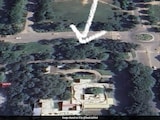The growing wealth of India's public is leading to a crucial shift in its $1 trillion sovereign bond market.
Their savings - channeled through life insurers, provident and pension funds - are increasingly getting plowed into long-term debt, leading to a structural change in the costs of borrowing for Prime Minister Narendra Modi's government.
India's yield curve has flattened markedly as the insurers and pension funds snapped up 10-to-40 year debt, with HDFC Life Insurance Ltd. saying that market participants are asking the central bank to sell more longer-dated bonds. Their growing footprint mean that the state will be less reliant on banks over time, while reducing anxiety among traders over how Modi's infrastructure-building spree will be funded.
"Insurance companies have been one of the key investors in long-maturity bonds," said Badrish Kulhalli, head of fixed-income at HDFC Life. "As the penetration and reach of distribution channels increase, we expect that the growth in the sales of the traditional products to continue to grow, and consequently the demand for long-maturity bonds."
The government will detail its April-to-September borrowing plan this week and typically aims for 55%-60% of its full year target.
The change has been incremental, with insurers owning 26% of government bonds at the end of December, up from 22% in 2010, according to finance ministry data. Their presence is likely understated thanks to the popular use of a derivative trade, worth $19 billion by some estimates, which masks purchases.
But, their rising heft was visible in recent bond auctions in the fiscal year ending March, where longer-dated debt priced at lower yields than shorter-maturity paper. The gap between the 10-year benchmark and its two-year equivalent has almost disappeared for the first time since 2017.
The 14.2 trillion rupee ($172 billion) borrowing program passed off smoothly and without the central bank having to support it, surprising market veterans.
Even bonds issued by provinces were snapped up insurers.
That's likely to please PM Modi, whose government will borrow a record 15.4 trillion rupees in the new fiscal year. Centre needs to find more longer-term investors for its bonds to fulfill an ambitious nation-building plan - which will include 50 new airports, heliports and aerodromes.
Finance Minister Nirmala Sitharaman has proposed raising capital spending by more than a third to 10 trillion rupees in her February budget and said the government had identified 100 new projects for so-called last mile connectivity.
Insurers Get Big
India is one of the fastest-growing insurance markets in the world and forecast to be the sixth biggest by 2032, according to a January report by Swiss Re, a global reinsurer. Total insurance premiums will grow on average by 14% annually in nominal local-currency terms over the next decade, it said.
Pension funds have also grown in size, another sector aided by the increase in financial sophistication. The National Pension System, or NPS, has seen assets under management expand by 18% this fiscal year to 8.5 trillion rupees as of February.
"They are the new incremental levers of government bond demand, outdoing banks," Madhavi Arora, lead economist at Emkay Global Financial Services, said, referring to the pension and provident fund corpus. "The key point is that they are hungry for duration and are agnostic about say a flat yield curve."
One factor driving demand for longer-dated debt over the last couple of years was a thriving derivative trade between banks and insurers called the bond-forward rate agreement. The strategy helped insurance companies lock in longer-term yields for products guaranteeing returns without having to take on more debt on their balance sheets.
"The last of couple of years has seen more demand from insurance companies," said Sampath Reddy, chief investment officer at Bajaj Allianz Life Insurance Ltd. "This is because the business has grown toward the non-par savings products where customers want guaranteed returns."
Tax Headwind
There are potential headwinds ahead, not least a tax on high value insurance products - targeting an area popular with wealthy investors - which kicks in from April. Some like Star Union Dai-ichi Life Insurance Ltd. and ICICI Securities Primary Dealership Ltd. say the impact needs to be monitored.
And investors need to be mindful of government borrowing, given PM Modi is relying on the debt market to finance one of Asia's highest budget deficits.
"The evolving demand-supply dynamics for the longer-end of the yield curve needs to be monitored with fresh supply in the new financial year," said Ram Kamal Samanta, senior vice president for investment at Star Union Dai-ichi Life Insurance. "As we have entered the late stage of the rate hiking cycle, this will determine the shape of the yield curve going forward."
Still, beyond the current fiscal year, India's position as the world's fastest-growing major economy is likely to deepen its financial markets, filling the coffers of its insurers and pension funds. And that money has a ready-made home in the longer-dated end of the bond market.
"Insurance has been incrementally becoming a major player," said Emkay's Arora.
(Except for the headline, this story has not been edited by NDTV staff and is published from a syndicated feed.)















